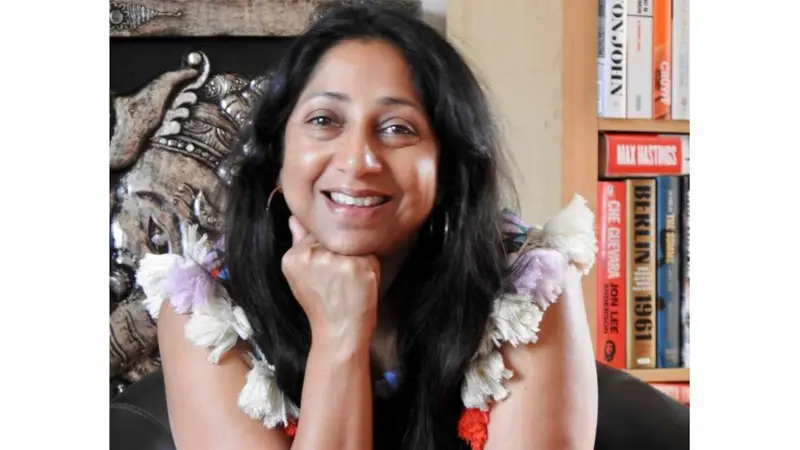
Green Living
Green Living
Women Nurturing Mother Earth: The Growing Influence of Female Environmentalists
English author Virginia Woolf once said, “For most of history, Anonymous was a woman,” illustrating the predicament of accomplished females that never received the recognition they were due. One example was Eunice Newton Foote, who presented her findings on the greenhouse effect at the 10th annual meeting for the American Association for the Advancement of Science in 1856, only to be eclipsed by John Tyndall, who was credited for this discovery even though his work on the subject was carried out two years later.
In 2013, the United Nations General Assembly adopted a resolution pronouncing that “full and equal access to and participation in science, technology and innovation for women and girls of all ages is imperative for achieving gender equality and the empowerment of women and girls.” In recent years, impactful women like African American space scientist and mathematician Katherine Johnson and Hispanic astronaut Ellen Ochoa have begun to be acknowledged for their contributions to science, technology, engineering and mathematics (STEM). Still, many more women remain on the sidelines.
Only 30 percent of the world’s researchers and less than one-third of the STEM workforce are women. Paradoxically, women are more impacted by climate change than men, given that 70 percent of individuals living in poverty are women. Females have less access to resources and education and are often dependent on natural resources that are impacted by global warming for their livelihood.
“Climate change affects everyone. It does not discriminate, yet, sadly, women’s voices are not heard enough, and women are even invisible at times,” says Sangeeta Waldron, author of Corporate Social Responsibility Is Not Public Relations. “Women, particularly in vulnerable regions, are the first to be impacted by climate change, as they are the ones who will need to collect the water from distant wells or rainfall when there is a drought; or who work on farms when the male members of their families have gone to the cities to earn a living, when their crops run dry due to lack of rain or in some places have too much rain; or who fight against the big fossil fuel companies that encroach on their land, organizing their community to fight back.”
Waldron also laments, “Neither do we see enough female representation at the negotiating table when discussing climate policies. The latest data and images from COP28 [28th Conference of the Parties to the United Nations Framework Convention on Climate Change] reinforce this; 140 world leaders were scheduled to speak, and only 15 were women. It highlights the gender gap despite improvements from previous COPs.”
Six Female Environmental Leaders
“Many women are playing a tremendous role in the green economy and are creating a sustainable, just and resilient economy,” says Quinn Antus, the program manager of emerging markets, carbon management and carbon dioxide removal for the state of Colorado. Here are some examples of female champions.
Yohana Tesfamariam Tekeste developed a new type of insurance to help farmers in eastern and southern Africa reduce their vulnerability to climate change. Haein Shin supports international education development, curating content about the environment, digital and financial literacy, and employment readiness. Nzambi Matee, a Young Champion of the Earth recipient, created bricks made of discarded plastic waste, finding a solution for littering and the housing crisis in Kenya. Naomi Davis founded Blacks in Green, which strives to be a national network for environmental justice and economic development that closes America’s racial health/wealth gap.
Zoë Gamble Hanes is the president of CleanChoice Energy, which helps make renewable energy accessible for all through solar farms and other clean-energy solutions. She says, “Sustainable practices only benefit from bringing in diverse voices. We’ve found ourselves in the midst of a new-age industrial revolution that requires a diverse talent pool to reach success. By empowering more women to join sustainable efforts—especially within the renewable energy sector that has traditionally been a male-dominated industry—we can usher in a new generation of passionate leaders with different, and important, perspectives, all working toward the goal of creating a greener, more sustainable future for years to come.”
Girl Power is Sustainable Power
Including women in sustainability is not just about equality, it is about leveraging human talent, insights and creativity to address climate change, food insecurity, equity and other pressing issues of our time. The facts are that the global temperature is rising, the ocean is getting warmer, extreme-weather-related events are increasing in frequency and glaciers are melting. Our best hope for addressing these issues is if everyone participates.
Kelcie Ottoes is a copywriter and content creator specializing in sustainability and environmental topics.
Original article published at Natural Awakenings National
REFERENCES
https://www.un.org/en/observances/women-and-girls-in-science-day
https://obamawhitehouse.archives.gov/women-in-stem
https://uis.unesco.org/en/topic/women-science
https://www.un.org/en/observances/women-and-girls-in-science-day
https://news.climate.columbia.edu/2022/02/11/why-climate-science-needs-more-women-scientists/
https://www.amazon.com/Corporate-Social-Responsibility-Public-Relations/dp/1911671421
https://energyoffice.colorado.gov/about-us/staff
https://www.researchgate.net/profile/Yohana-Tesfamariam-Tekeste
https://csd.columbia.edu/people/haein-shin
https://www.unep.org/youngchampions/bio/2020/africa/nzambi-matee
https://www.unep.org/youngchampions/


 By
By






